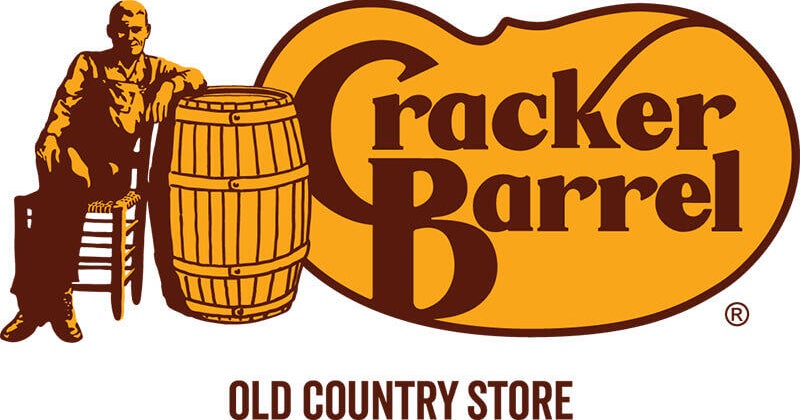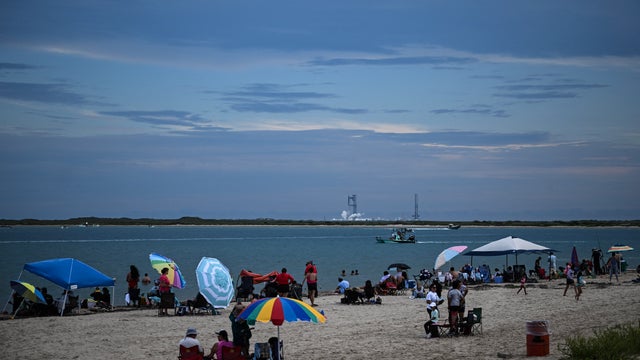

No response returned

When Cracker Barrel unveiled its new logo last week as part of an ongoing , it wouldn't have expected the marketing move to spark a public furor and cause the restaurant's chain value to .
Yet the episode highlights the perils of tinkering with a company's brand. Cracker Barrel acknowledged in a statement on Monday that "we could've done a better job sharing who we are and who we'll always be."
Marketing experts are more blunt about Cracker Barrel's misfire.
"From a branding perspective, it's basically a flop," said David E. Johnson, CEO of branding agency Strategic Vision PR Group, of Cracker Barrel's logo redesign. "What they did wrong is they went against their brand story, which was the old logo, that reflected the southern, whimsical atmosphere in the stores."
In Johnson's view, Cracker Barrel's mistake was that it replaced a logo with genuine symbolic currency for a "very generic looking logo that doesn't tell a story." Other branding experts say the hubbub is the result of a business severing its design from its roots — a cardinal sin for a company like Cracker Barrel whose folksy is meant to evoke "homestyle country cooking."
More specifically, Cracker Barrel's new logo retains the rustic color palette of the original design, while removing the image of an older gentleman sitting in a wicker chair leaning against a barrel.
The first Cracker Barrel restaurant was launched in Lebanon, Tennessee, in 1969 by Dan Evins while working for his family's gasoline business. The idea was to recreate the kind of homey restaurants he'd enjoyed as a child, according to the company's . The man in Cracker Barrel's original logo is said to be Evins' uncle, , who until now has been central to much of the restaurant's branding and merchandise.
The move to remove both Herschel and the namesake barrel from the logo irked some Cracker Barrel loyalists because the original image represented what franchise consultant and branding expert Nick Yeonakis called a "throwback to a simpler time that was about home cooking."
"So, people have this image in their mind of a Cracker Barrel that is constant and stable, and that's why when they rebranded, backlash happened," he said.
Still, marketing experts agree that Cracker Barrel, which operates nearly 660 corporate-owned locations across the U.S., was due for an image revamp. The company's growth, which soared in the 1990s, has slowed in recent years. In 2024, the company reported revenue of roughly $3.5 billion, up less than 1% from $3.4 billion the previous year, while net income fell to $40.9 million, down sharply from $99 million in 2023.
In 2024, concerns over its competitiveness and stagnant growth prompted the company, led by new CEO and former Taco Bell executive Julie Felss Masino, to to its restaurants, menu and pricing.
The chain had become less relevant in part because it had leaned too heavily on the "timeless nature of our concept," Masino said in a May 2024 conference call with Wall Street analysts. "The goal, simply put, was to freshen things in such a way as to be noticeable and attractive but still feel like Cracker Barrel," she said.
Today, Cracker Barrel maintains that its restaurants will retain their old-timey vibe, including using Uncle Herschel in its marketing.
"We love seeing how much you care about our 'old-timer.' We love him too. Uncle Herschel will still be on our menu... on our road signs and featured in our country store. He's not going anywhere — he's family," the company said in its statement on Monday.
Customer anger over Cracker Barrel's new logo also reflects the culturally and politically charged environment companies face today. For example, when Bud Light partnered with transgender influencer Dylan Mulvaney in 2023, some customers called for a boycott of the beer brand, badly denting the .
In one social media post that typified some of the criticism of Cracker Barrel, one account called "Woke War Room" called for Masino to resign. "Cracker Barrel's new logo isn't an accident — it's CEO Julie Felss Masino's project. She scrapped a beloved American aesthetic and replaced it with sterile, soulless branding," the post .
Such critiques illustrate the fine line companies are often forced to tread, Carreen Winters, president of reputation at MikeWorldWide, told CBS MoneyWatch.
"It's very hard to be a brand for everybody today because we are so polarized, and people look at things through a political lens even if there is no political intent," she said. "When you are a legacy brand, it's really important to understand who your core is, and to not do anything to alienate them while cultivating your future or next generation customer."
Other experts are skeptical Cracker Barrel's redesign was politically motivated.
"I really doubt the Cracker Barrel executives sat down and said, 'We'll go through this enormously expensive undertaking to change all of our signage and everything on social media in order to change something because we feel we want to be 'woke,'" Thomas Murphy, a business professor and branding expert at Clark University, told CBS MoneyWatch.
Rather, Cracker Barrel missed the mark by failing to fully take into account people's emotional investment in its brand, Winters said.
"If you are a legacy brand and you're modernizing, you have to make sure you've appropriately honored that legacy because at the end of the day, your stakeholders own your brand — you don't," she said. "Not understanding the customer and the rest of stakeholders and what they care about really matters, and that seems to be what went awry here."





